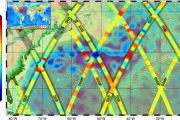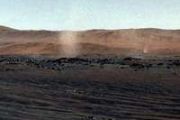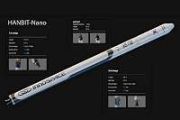
Copernical Team
Pin your way to VIP Webb launch party with ESA’s new Pinterest channel

ESA is diversifying its online presence with the launch of a Pinterest channel and is reaching out to this highly creative audience to plan a space-themed Halloween party around the launch of the international Webb mission later this year.
Green light given for construction of world's largest radio telescope arrays
 SKA Observatory Global Headquarters, UK, Tuesday 29 June 2021 - At a historic meeting of its Council last week, the recently formed SKA Observatory (SKAO) saw its Member States approve the start of construction of the SKA telescopes in Australia and South Africa.
The two telescopes, currently designated SKA-Low and SKA-Mid, names which describe the radio frequency range they each cover, wi
SKA Observatory Global Headquarters, UK, Tuesday 29 June 2021 - At a historic meeting of its Council last week, the recently formed SKA Observatory (SKAO) saw its Member States approve the start of construction of the SKA telescopes in Australia and South Africa.
The two telescopes, currently designated SKA-Low and SKA-Mid, names which describe the radio frequency range they each cover, wi Black holes swallow neutron stars like 'Pac Man'
 Scientists have for the first time detected black holes eating neutron stars, "like Pac Man", in a discovery documenting the collision of the two most extreme and enigmatic objects in the Universe.
The Laser Interferometer Gravitational-Wave Observatory (LIGO) in the US and the Virgo gravitational-wave observatory in Italy have captured the gravitational waves from the death spiral and mer
Scientists have for the first time detected black holes eating neutron stars, "like Pac Man", in a discovery documenting the collision of the two most extreme and enigmatic objects in the Universe.
The Laser Interferometer Gravitational-Wave Observatory (LIGO) in the US and the Virgo gravitational-wave observatory in Italy have captured the gravitational waves from the death spiral and mer Supermassive black holes may generate 'tsunamis' in escaping gas
 Here on Earth, earthquakes and underwater volcanic eruptions may displace enough ocean water to create a tsunami, a drumbeat of waves reaching huge heights as they approach land. Now, astrophysicists have used computer simulations to show that in deep in space, tsunami-like structures may form on much bigger scales, from gas escaping the gravitational pull of a supermassive black hole.
In
Here on Earth, earthquakes and underwater volcanic eruptions may displace enough ocean water to create a tsunami, a drumbeat of waves reaching huge heights as they approach land. Now, astrophysicists have used computer simulations to show that in deep in space, tsunami-like structures may form on much bigger scales, from gas escaping the gravitational pull of a supermassive black hole.
In Images emerge of galaxies headed for collision
 An international group of astronomers has created images with never-before-seen detail of a galaxy cluster with a black hole at its centre, travelling at high speed along an intergalactic 'road of matter'. The findings also support existing theories of the origins and evolution of the universe.
The concept that roads of thin gas connect clusters of galaxies across the universe has been dif
An international group of astronomers has created images with never-before-seen detail of a galaxy cluster with a black hole at its centre, travelling at high speed along an intergalactic 'road of matter'. The findings also support existing theories of the origins and evolution of the universe.
The concept that roads of thin gas connect clusters of galaxies across the universe has been dif Polymers in meteorites provide clues to early solar system
 Many meteorites, which are small pieces from asteroids, do not experience high temperatures at any point in their existence. Because of this, these meteorites provide a good record of complex chemistry present when or before our solar system was formed 4.57 billion years ago.
For this reason, researchers have examined individual amino acids in meteorites, which come in a rich variety and m
Many meteorites, which are small pieces from asteroids, do not experience high temperatures at any point in their existence. Because of this, these meteorites provide a good record of complex chemistry present when or before our solar system was formed 4.57 billion years ago.
For this reason, researchers have examined individual amino acids in meteorites, which come in a rich variety and m Japan planning soil sampling mission to Mars' Moon Phobos
 The Japanese government is considering sending a spacecraft to Mars's Phobos satellite in 2024 to obtain soil samples by 2029, public broadcaster NHK reported.
The agency said that Japan's strategic council has compiled a mid-term report on space policy on Tuesday. According to it, the Japan Aerospace Exploration Agency (JAXA) intends to launch a probe and reach one of the two satellites o
The Japanese government is considering sending a spacecraft to Mars's Phobos satellite in 2024 to obtain soil samples by 2029, public broadcaster NHK reported.
The agency said that Japan's strategic council has compiled a mid-term report on space policy on Tuesday. According to it, the Japan Aerospace Exploration Agency (JAXA) intends to launch a probe and reach one of the two satellites o Scientists closer to explaining Mars methane mystery
 Reports of methane detections at Mars have captivated scientists and non-scientists alike. On Earth, a significant amount of methane is produced by microbes that help most livestock digest plants. This digestion process ends with livestock exhaling or burping the gas into the air.
While there are no cattle, sheep, or goats on Mars, finding methane there is exciting because it may imply tha
Reports of methane detections at Mars have captivated scientists and non-scientists alike. On Earth, a significant amount of methane is produced by microbes that help most livestock digest plants. This digestion process ends with livestock exhaling or burping the gas into the air.
While there are no cattle, sheep, or goats on Mars, finding methane there is exciting because it may imply tha After 60 years, nuclear power for spaceflight is still tried and true
 Six decades after the launch of the first nuclear-powered space mission, Transit IV-A, NASA is embarking on a bold future of human exploration and scientific discovery. This future builds on a proud history of safely launching and operating nuclear-powered missions in space.
"Nuclear power has opened the solar system to exploration, allowing us to observe and understand dark, distant plane
Six decades after the launch of the first nuclear-powered space mission, Transit IV-A, NASA is embarking on a bold future of human exploration and scientific discovery. This future builds on a proud history of safely launching and operating nuclear-powered missions in space.
"Nuclear power has opened the solar system to exploration, allowing us to observe and understand dark, distant plane NASA software benefits Earth, available for business, public use
 Many of NASA's computational innovations were developed to help explore space, but the public can download them for applications that benefit us right here on Earth. The agency's latest software catalog has hundreds of popular programs, as well as more than 180 new ones, all available for free download.
"From operations here on Earth to missions to the Moon and Mars, software is integral t
Many of NASA's computational innovations were developed to help explore space, but the public can download them for applications that benefit us right here on Earth. The agency's latest software catalog has hundreds of popular programs, as well as more than 180 new ones, all available for free download.
"From operations here on Earth to missions to the Moon and Mars, software is integral t 






























